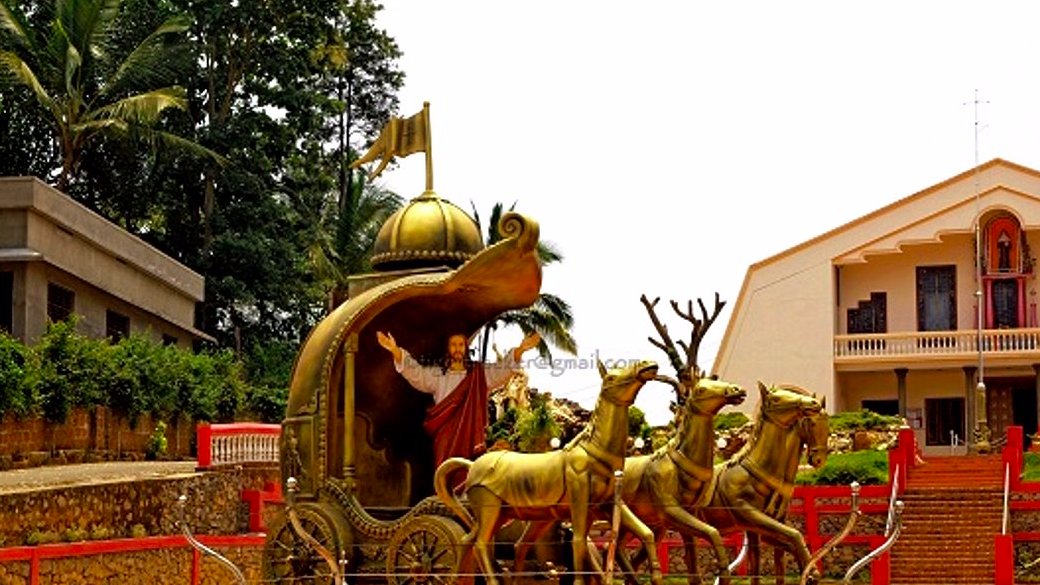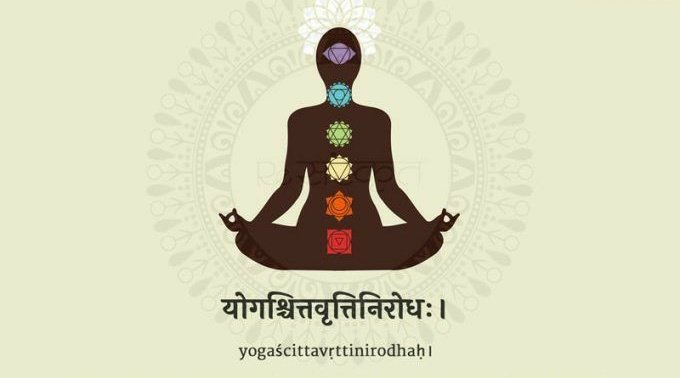
II Sri Adi Śaṅkarācārya - श्री आदि शङ्कराचार्य II
Sōpānaṁ : 12 The Presence of the Guru :
परीक्ष्य लोकान्कर्मचितान्ब्राह्मणो निर्वेदमायान्नास्त्यकृतः कृतेन ।
तद्विज्ञानार्थं स गुरुमेवाभिगच्छेत्समित्पाणिः श्रोत्रियं ब्रह्मनिष्ठम् ॥ १२ ॥
(मुण्डकोपनिषत् १ -२ - १२)
#Thread
Sōpānaṁ : 12 The Presence of the Guru :
परीक्ष्य लोकान्कर्मचितान्ब्राह्मणो निर्वेदमायान्नास्त्यकृतः कृतेन ।
तद्विज्ञानार्थं स गुरुमेवाभिगच्छेत्समित्पाणिः श्रोत्रियं ब्रह्मनिष्ठम् ॥ १२ ॥
(मुण्डकोपनिषत् १ -२ - १२)
#Thread

‘Having examined the worlds that can be obtained through ‘karma’, a brahmin has to attain complete dispassion & should recognise the fact that the ‘Uncreated Whole’ cannot be attained through action. Therefore to know the Truth, the seeker should, in the traditional manner, take
a bundle of ‘Samit’ (sacrificial banyan twigs) & with all humility approach a Guru who has deeply imbibed the essence of Upanishads & is established in Brahman.’
(Muṇḍaka Upaniṣad - 1-2-12)
In the Gita Bhashyam Acharya explains the meaning of ‘Pandita’ as
(Muṇḍaka Upaniṣad - 1-2-12)
In the Gita Bhashyam Acharya explains the meaning of ‘Pandita’ as

'panda atmavishayamati: yesham te hi pandita’ - ‘Pandityam’ is not bookish knowledge, it is the ‘intelligence that reveals the Self’, or knowledge of the Self’. The term ‘panda’ means. ‘Knowledge of the Self’. One who has the knowledge of the oneness of Brahman & Atman as stated 

in the 'Stuti',is a 'srotriya'.
(The below explanation is an Ultimate Gem) :
In Vivekacūḍāmaṇi, Acharya says ‘nanye parokshay kathabhidayinah’ - ‘others who blabber second hand information are not fit for this’. A wick on a lamp can be lit only from another lamp, not from a
(The below explanation is an Ultimate Gem) :
In Vivekacūḍāmaṇi, Acharya says ‘nanye parokshay kathabhidayinah’ - ‘others who blabber second hand information are not fit for this’. A wick on a lamp can be lit only from another lamp, not from a
painting of a flame.
Ultimate destruction of sorrow is the aim of Vedānta & not mesmerising others with intellectual gymnastics.
निर्विकल्पकसमाधिना स्फुटं ब्रह्मतत्त्वमवगम्यते ध्रुवम्।
नान्यथा चलतया मनोगतेः प्रत्ययान्तरविमिश्रितं भवेत्॥ ३६६॥
{Vivekacūḍāmaṇi-366)
‘The self
Ultimate destruction of sorrow is the aim of Vedānta & not mesmerising others with intellectual gymnastics.
निर्विकल्पकसमाधिना स्फुटं ब्रह्मतत्त्वमवगम्यते ध्रुवम्।
नान्यथा चलतया मनोगतेः प्रत्ययान्तरविमिश्रितं भवेत्॥ ३६६॥
{Vivekacūḍāmaṇi-366)
‘The self

is clearly recognised only in the state of ‘nirvikalpa samadhi’, & not when the mind is active. In any other state the pure awareness of ‘I’ gets limited by images created by thoughts.’
Govinda Bhagavatpāda taught Śaṅkarā in the conventional manner. ‘Proudhanubhuti’ describes
Govinda Bhagavatpāda taught Śaṅkarā in the conventional manner. ‘Proudhanubhuti’ describes
how an enlightened Guru imparts knowledge to an ardent seeker.
Pacifying the fury of Narmada :
Once when Govinda Bhagavatpāda was being absorbed in yoga with the ‘manonmani mudra’, there was a flood in the Narmada & the villages on the banks for submerged. The villagers
Pacifying the fury of Narmada :
Once when Govinda Bhagavatpāda was being absorbed in yoga with the ‘manonmani mudra’, there was a flood in the Narmada & the villages on the banks for submerged. The villagers
hastened to Govindaguru & prayed to him. But then, the Guru was immersed in ‘samadhi’. The villagers & the monks got upset & looked at Śaṅkarā helplessly. Śaṅkarā, remaining cool & serene, went down the hill, with the others following him,. He placed his ‘kamandala’ (water-pot) 

on the banks & chanted a hymn adoring Narmada :
{Enclosed is the ॥ नर्मदाष्टकम ॥}
Śaṅkarā spent the daytime in study, discussion & performance of daily rituals. From evening till midnight he remained in ‘nirvikalpa samadhi’. Three years passed by in this manner. Śaṅkarā

{Enclosed is the ॥ नर्मदाष्टकम ॥}
Śaṅkarā spent the daytime in study, discussion & performance of daily rituals. From evening till midnight he remained in ‘nirvikalpa samadhi’. Three years passed by in this manner. Śaṅkarā


became an adept in Brahmavidya & Yogasastra.
त्वमहमिदमितीयं कल्पना बुद्धिदोषात् प्रभवति परमात्मन्यद्वये निर्विशेषे।
प्रविलसति समाधावस्य सर्वो विकल्पो विलयनमुपगच्छेद्वस्तुतत्त्वावधृत्या॥ ३५५॥
’Thought modifications such as ‘you’, ‘I’ and ‘it’ appear in the ‘Paramatma’, the
त्वमहमिदमितीयं कल्पना बुद्धिदोषात् प्रभवति परमात्मन्यद्वये निर्विशेषे।
प्रविलसति समाधावस्य सर्वो विकल्पो विलयनमुपगच्छेद्वस्तुतत्त्वावधृत्या॥ ३५५॥
’Thought modifications such as ‘you’, ‘I’ and ‘it’ appear in the ‘Paramatma’, the
non-dual self, due to the defects of the intellect. As one becomes more & more established in the ‘samadhi’, and when the perception of the self becomes clearer & clearer, all the inner limitations get dissolved & the awareness of the Self shines forth within’.
Śaṅkarā,
Śaṅkarā,
established in this ‘sahaja nirvikalpa’ state,became ‘lokasankara’ ( a great blessing to the world).
Śaṅkarā’s divine brilliance had an irresistible attraction for everyone ; his knowledge of the ’sastras’, and his understanding of the path of yoga & ‘upasana’ were phenomenal.
Śaṅkarā’s divine brilliance had an irresistible attraction for everyone ; his knowledge of the ’sastras’, and his understanding of the path of yoga & ‘upasana’ were phenomenal.
He shone forth as a living illustration of the mantra ‘ ya: Sarvajna : ya: sarvavid’.
One day Govinda Bhagavatpāda called Śaṅkarā to his side. Śaṅkarā stood near him with great humility. The guru said, “ Thou must now start travelling for the benefit of the world. Impart the
One day Govinda Bhagavatpāda called Śaṅkarā to his side. Śaṅkarā stood near him with great humility. The guru said, “ Thou must now start travelling for the benefit of the world. Impart the

essence of the Upanishads and Gita and the bliss of Self-experience to ardent seekers of Truth, who, tormented by the fire of ‘samsara’, approach thee.
Asking Śaṅkarā to go to Kāśī and impart to the ardent seekers, the self-knowledge that he had obtained by the grace of Guru &
Asking Śaṅkarā to go to Kāśī and impart to the ardent seekers, the self-knowledge that he had obtained by the grace of Guru &
the ‘sastra’, Govindapada, hitherto limited by the body, became all-pervading in his presence by merging in the Infinite.
Thus ends the twelfth Sōpānaṁ.
I ओम् तत् सत् I
I Om Tat Sat I
Thus ends the twelfth Sōpānaṁ.
I ओम् तत् सत् I
I Om Tat Sat I

@RituRathaur @ikkmurugan @Mishti_in @shallakaul @BeenaPP1 @IshaSattva @geetaraavi @armykafan @kachnarr @apparrnnaa @ushanirmala @lokagatha @bangadvedant @aneelgs @pburavalli @mysql_sync @deshmata @VamseeJuluri
• • •
Missing some Tweet in this thread? You can try to
force a refresh

















